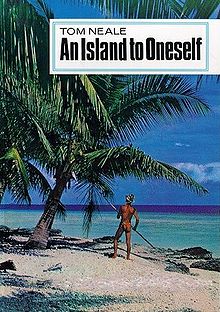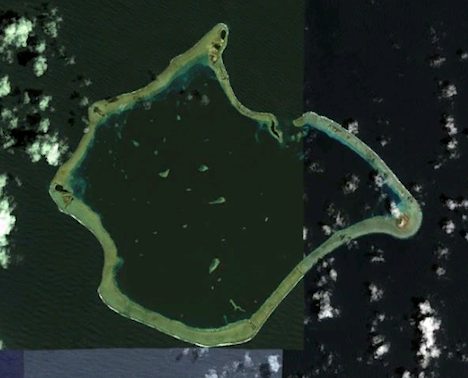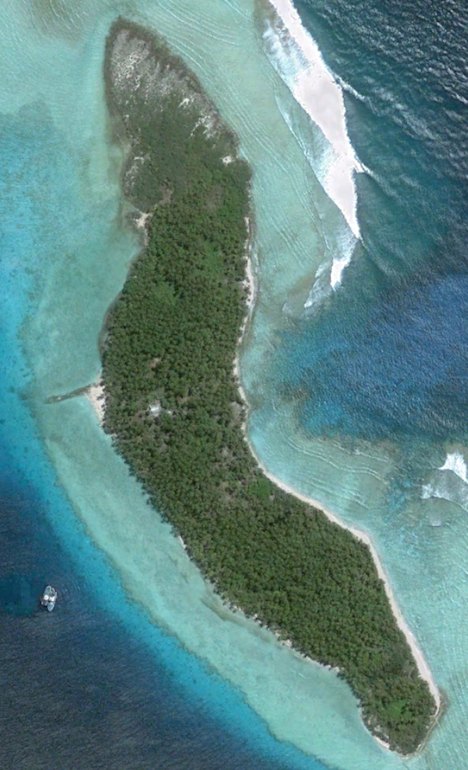Sometimes the actions of a remarkable person on a remote island forever mark that place, turning it into an destination for future generations of adventurous fans. Some well-known examples are Paul Gauguin with Hiva Oa, Father Damien with Molokai, Ernest Shackleton with Elephant Island and Robert Louis Stevenson with Upolu.
 Then there is the case of Tom Neale, who is less famous, though no less remarkable. In 1952, at the age of 50, he decided to cast off from society and survive by himself on an uninhabited and remote atoll in the South Pacific. He then wrote a book about his adventures — An Island to Oneself, published in 1966 — which ever since has enjoyed cult status among adventurers and lovers of the South Pacific. He ended up living on his island for a total of 16 years in three stints, up until shortly before his death in 1977.
Then there is the case of Tom Neale, who is less famous, though no less remarkable. In 1952, at the age of 50, he decided to cast off from society and survive by himself on an uninhabited and remote atoll in the South Pacific. He then wrote a book about his adventures — An Island to Oneself, published in 1966 — which ever since has enjoyed cult status among adventurers and lovers of the South Pacific. He ended up living on his island for a total of 16 years in three stints, up until shortly before his death in 1977.
The “island” Neale had to himself is Suwarrow atoll, atop a lone and remote seamount in the northern Cook Islands, out of the way of shipping routes. I was unaware of both Neale and Suwarrow until yesterday, when I learned that two friends are planning to drop anchor there on their sail across the Pacific. I wondered what attracted them to Suwarrow, so I googled the place. Tom Neale’s adventures immediately stood out, and brought the place to life.

Soon, I discovered that long extracts of Neale’s book are available online (part 1, part 2, part 3). Be careful, because it makes for addictive reading: I thought I’d skim it in 15 minutes, but several hours later I was still at it, rapt, and managed to finish the book today.
Neale goes into meticulous detail about what surviving on a deserted island requires, along with the mishaps that befell him, the lucky escapes, and tales of the infrequent (and often dumbfounded) visitors. But the book’s appeal transcends its narrow focus, because his life plays out a fantasy many of us have had from the safety of our cubicle offices — what would it be like to be Robinson Crusoe, for real?
No wonder my friends are headed that way, to take in, just for a day or two, Neale’s world. Rhian and Andy are sailing across the Pacific from Chile (and blogging the trip, including their harrowing account of destruction and rescue when the Chile quake tsunami hit the Juan Fernandez islands). Rhian is an Antarctic research scientist while Andy is an ex-military adventurer-climber, so their attraction to Neale’s tale of extreme self-sufficiency makes perfect sense.
Neale’s book describes his atoll very precisely — the lengths and shapes of the various islets, the location of the pier he tries to repair, his cabin, the beaches he combs for flotsam, the trees he uses for food or tools… All of it ripe for enhancement with Google Earth.
Sure enough, Google Earth delivers very high resolution imagery from several different dates: February 5 and January 13, 2009, as well as from April 5, 2005 and November 17, 2004. Each set has different strengths — for example, the 2004 imagery has the most glorious turquoise views of the reefs. On all images you can see the pier, his cabin, the beaches, even the specific trees he mentions, and you can certainly count the crowns of the palm trees.

(To scrub between these different images, zoom in on Suwarrow, turn on the historical imagery slider and drag the marker to the different dates.)
Here is a KMZ file for Google Earth pinpointing the location of Suwarrow, and adding many of the places Neale mentions. Place names were added after cross-checking with this high resolution map of Suwarrow.
Strangely, around the atoll there is a large (15km) discrepancy between Google’s place name database and the satellite imagery. (The high resolution map linked to above corresponds to the satellite imagery). Geonames.org also shows a (smaller) discrepancy, so there is definitely a need to reconcile these diverging datasets.
These days, all of Suwarrow Atoll is a national park and one of the Pacific’s most important bird breeding areas. A caretaker lives on the island during the off-cyclone season, with perhaps 50 yachts per year visiting. (You can see several boats at anchor in the 2005 imagery.) A room in Neale’s cabin has been preserved just as he left it.
It’s people and places like Neale on Suwarrow that make the world such an interesting place. It’s just up to us to get out and go find them.
Another book about living in an uninhabited island: Castaway by Lucy Irvine
reading this post while friends were visiting our boat, there were mixed responses – some (like me)’oh, how cool’, others ‘o no, don’t go telling everyone about it’! Thanks for being such a thorough researcher, Stefan. Means we don’t all have to travel there physically to enjoy the place.
You forgot the island nation of Kiribati & “The Sex Lives of Cannibals” by J. Maarten Troost.
http://www.amazon.com/Sex-Lives-Cannibals-Equatorial-Pacific/dp/0767915305
It is one of the funniest books I have ever read. It’s the kind of book you laugh out loud while reading in public, and people think there is something wrong with you.
Jeffrey Martin
360 Cities